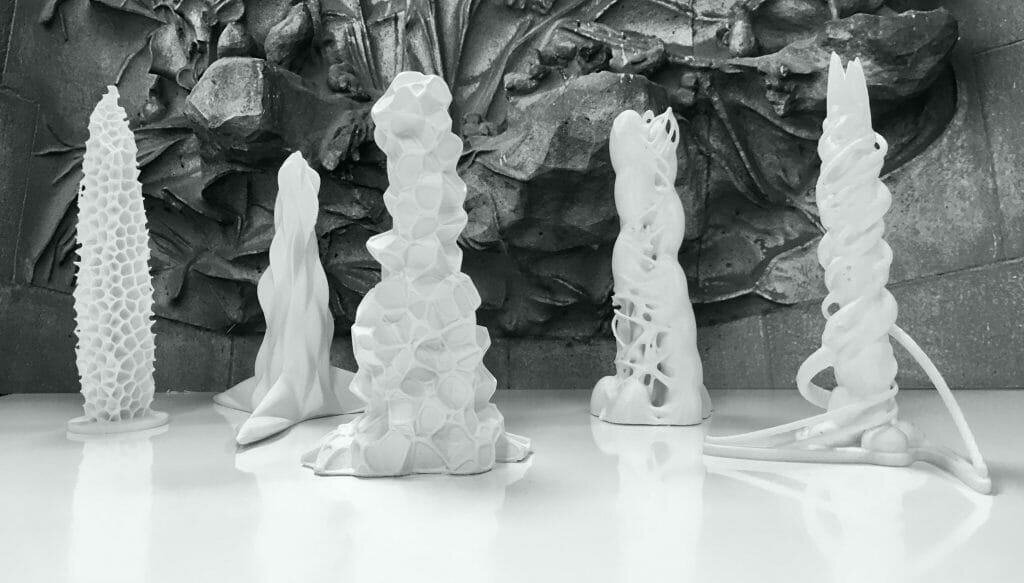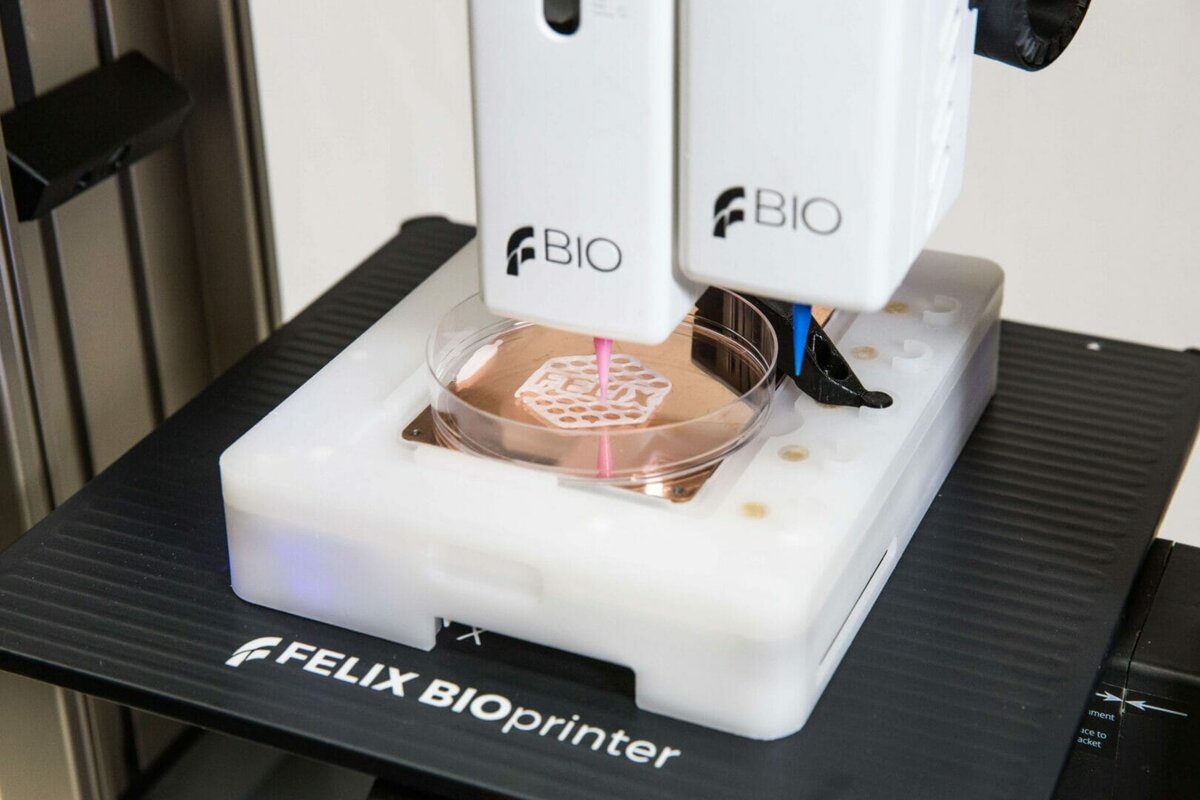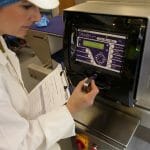Guillaume Feliksdal, CoFounder, FELIXprinters
Alberto T. Estévez, Founder and Director, iBAG-UIC Barcelona
BioDigital Architecture, is the fusion of biological and digital techniques in architecture, a true coming together of intelligence from nature and computational-based technology. The discipline starts with the premise that nature has the answers, and that as our scientific understanding advances, so too does our ability to understand more and more that nature has to reveal.
From a philosophical perspective, the Institute for BioDigital Architecture and Genetics (iBAG-UIC) in Barcelona, is attempting to find out that if nature has the answers, what are “the questions”? The institution is interrogating “the question” from the angle of biology, genetics, computation, art, architecture, design, and civil engineering. The Institute is effectively exploring the frontiers of knowledge, one key interdisciplinary cross-point in this exploration being the point where genetics meets biology and the digital — in the case of iBAG-UIC applied to architecture and design.
The central objective of iBAG-UICs research is to create architecture and design by joining forces with geneticists and philosophers, and focusing on the bringing together of biological and digital techniques to achieve architectural objectives. Also existing at the crossing point of the biological and the digital world is the BIOprinter produced by FELIXprinters, and this article looks at the reasons that IBAG-UIC chose to use the FELIXprinter’s technology, and the way the BIOprinter is used in its research.
THE FUTURE IS BIODIGITAL
iBAG-UIC is convinced that biodigital is the future for architecture, and forecasts that houses, cities, and landscapes will be 50% biological and 50% digital in the not-too-distant future. For sure the potential of new biological and digital techniques will have an enormously positive impact on sustainability and social efficiency which the planet currently needs to sustain life.
So, how can we visualize future cities and future houses? The city of the future will be 100% biodigital, improved by biological and digital technology. For example, we can learn from trees, making cities that are more like forests rather than a mass of boxes. At present as our cities grow, nature dies. The future demands that everything man does creates life, and this is where the future can be seen to be biodigital.
Biodigital architecture aims to transform the built environment into a part of the natural environment and ecosystems, turning architecture into a living thing that possesses the complex intelligence of biological agents and systems. This is achieved through the integration of natural bio-intelligence through the agency of biotechnological tools (extending from the simple culturing of bacterial or fungal strains to produce bacterial cellulose or mycelium bricks as a building material to the specific DNA editing to insert a bioluminescent gene into a non-naturally luminescent tree); digital design tools (3D modelling in parametric and digital design platform), and bio-fabrication tools and digital-fabrication tools (additive or subtractive manufacturing methods, such as 3D printing, robotic manufacturing, CNC milling as so on).

IBAG-UIC & THE BIOPRINTER
Among other things, iBAG-UIC is committed to adopting and employing the latest advancements in digital fabrication technologies. The Institute was one of the first to include different types of 3D printing technologies and machines in the architectural design and fabrication process.
Right now, the Institute’s research line of bioactive tissues, managed by Dr. Yomna K. Abdallah, Assistant professor and PhD researcher in Bioengineering at UIC, Barcelona, includes main three aspects.
First is the pre-printing phase for developing different bioinks suitable for maximum cell viability and boosting the proliferation of certain cell types.
Second is the 3D printing process for experimenting with the printability of the different compositions of customized bioinks and their rheological properties in the printing and post-printing process of cross linking and fastness. This phase is crucial as it contains many parameters controlling the biomaterial tissue’s chemical, physical, and structural properties while maintaining their bio viability.
Third is the post-printing phase where iBAG-UIC experiment with the proliferation, differentiation, functionality, morphogenesis and independent pathways of the printed biomaterials, followed by the scaling up of these printed biomaterials and how their cellular scale behaviour will affect them at the macro scale. In this phase the Institute also experiments with the application of the biomaterials in the architectural built environment to build a picture of their performance, on pilot scale, in real time, and under real operating conditions.
The Felix 3D Bioprinter is the main tool used in the second phase, the printing phase, where the Institute uses it to identify the possibility of controlling and adjusting the chemical, physical, and structural parameters related to the composition of the biomaterial tissues. iBAG-UIC aim to achieve a library of new living biomaterials with their independent pathways to be used as architectural materials for various functional and ecologic aspects.
iBAG-UIC see FELIXprinters as a leading 3D printing technology supplier, and have been using their printers in one form or another for over 6 years. The Institute considers that FELIXprinters machines offer the highest resolution and geometrical precision on the market, and with the BIOPrinter it is eager to benefit from the optimum design of the BIOprinter including its dual head extruder, enabling the printing of sophisticated tissues and materials with multiple bioinks in an accurate and well controlled digital process.
In addition to this, the BIOprinter has supported iBAG-UIC’s research sharing the same interests and views on scaling up this collaboration on an international scale with the opening of Biomanufacturing Labs in Sharjah and Barcelona. The Institute admires FELIXprinter’s creativity, courage and vision and this has cemented FELIX as a key collaborator.
KEY BIOPRINTER ATTRIBUTES
The FELIX Bioprinter’s dual head extruder supports the level of sophistication and complexity of iBAG-UIC’s target design of biomaterial tissues composition. The dual printing with multiple bioinks in the same printing process enables the Institute to experiment with and synthesize wider compositions of different optimized biomaterial tissues more subjectively and customized to their functional applications.
The geometrical precision of the BIOprinter achieved by the high resolution and translation of the G-code gives iBAG-UIC endless potential in controlling the physical dimensions and properties of the printed biomaterials. So, the Institute can customize the chemical and physical properties of its biomaterial tissues with ultimate control over the geometric composition of these tissues on the nano and microscale. And this is precisely the level of precision that iBAG-UIC needs for its research.
Finally, the highly sterile printing conditions offered by the FELIX BIOprinter maintains the viability of the living cells composing the Institute’s biomaterials tissues, thereby guaranteeing the efficiency of the printing and post printing process.
FELIXprinters also provides technical support that is very responsive and easily reached 24/7. iBAG-UIC believes because of this, FELIXprinters has all the attributes that are needed to result in successful and fruitful research.
SUMMARY
The 3D printing sector is dynamic, but the area of bioprinting is perhaps the most fertile area for research and development today. The iBAG-UIC work on biodigital architecture is both fascinating and also intriguing from a technological point of view. FELIXprinters looks forward to collaborating with iBAG-UIC on projects that have strong moral and ethical credentials and which can position 3D printing as a contributor to the sustainability of the planet.





